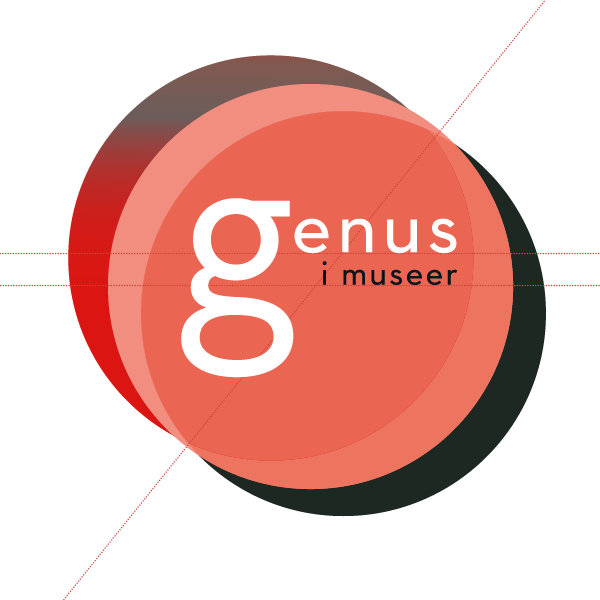Making gender visible in museums: a new approach
It’s June, and corporations are falling over themselves to make their queer allyship visible. Social media and city centres are a riot of rainbows. While the visible centring of queer culture for a month of every year can feel genuinely heartening – even if some institutions’ gestures of inclusivity have turned out to be distinctly hollow – our heritage is still too often invisible in museums.
Growing up as a queer trans person who hadn’t yet articulated their identity, I clung to history for the sense of community it provided, a community I lacked in ‘real’, present-day life. But outside of exhibits dedicated to trans history, it’s still rare for me to see myself in heritage spaces. This isn’t a problem restricted to queer museum visitors: women, people of colour, disabled people and others from marginalised groups are still too often absent from museum spaces. As a researcher, I’m interested in the stories of gender that are present in museum objects but invisible, waiting to be told.
One way that museums often try to combat this is to focus on individuals: to highlight a real woman, for example, who is known to have owned a particular object. But the work I’m contributing to takes a broader approach. Our project, ‘Gendering Interpretations’ – a collaboration between the University of Plymouth and Victoria & Albert Museum (V&A) in the UK, and Lund University and Vasamuseet in Sweden – is investigating the multiple hidden connections to gender behind museum objects. These might be connections to individuals – but just as importantly, they might also be about groups of people whose name has been lost to history.

This method of looking at objects starts by considering their life stories. This cap on display at the V&A, for example, started life as wool on the back of a sheep. In sixteenth-century England, when this cap was made, women who sheared sheep were paid less than men for the same work[1] – a stark reminder that today’s gender pay gap has a long and deeply rooted history. Once shorn, the wool was spun by women, and knitted and felted into a cap by members of the cappers’ guild, who might have been of any gender: while women were treated as exceptions to the rule, we do know that some girls were apprenticed in the cap-making trade.[2]
When the cap was made, who wore it? This is where its gendered history gets even more interesting. Legally speaking, this is a man’s hat: the 1571 Cappers’ Act stated that ‘Every Person above the Age of seven Years… Except Maids, Ladies, Gentlewomen, and Noble Personages’ was required to wear a cap like this one on Sundays and holidays.[3] But numerous texts survive in which men express concern that women are, in fact, wearing men’s hats – so many, that it seems that hats became a focus of anxiety about gender nonconformity in early modern England.
There are many reasons why women, or people assigned female at birth, might have worn hats like this: to express sexual availability, to feel safe in the street, to access more economic opportunities, to push the boundaries of fashion. But among them, we should acknowledge the fact that if a woman wanted to express masculinity – or if a person who was assigned female at birth wanted to be read as male – then wearing a ‘legally male’ hat like this one would have been one of the best ways to do that.
So by pulling at different threads of this hat, we can reveal all kinds of gendered histories. This can also lead us in different cultural directions.

This snuff box, for example – also on display at the V&A – is made of tortoiseshell, almost certainly sourced from Caribbean islands. When Spanish colonisers invaded, they found a society – the Taino – in which the role of cacique (chief) was not gender-specific, and in which women played an important political and economic role.[4] Within little more than a decade, Taino men had been conscripted to labour in Spanish mines and many women married to Spanish colonisers, who imposed European gender roles on their new wives. The story of colonisation of the Caribbean is, as so often, also the story of the imposition of Western European gender hierarchies and binaries.
This method of uncovering gender diversity in the past can radically transform how we look at objects in museums – and who is visible when we do. So this Pride Month, remember that queer visibility isn’t just about the visual signalling of rainbows. More than that, it requires us to make visible the stories of gender that are already present in our heritage spaces – so that we can see ourselves in museums, and other people can see us too.
Kit Heyam is a postdoctoral research fellow at the University of Plymouth, working on the project ‘Gendering Interpretations of the Collections of the V&A and Vasa Museums’, and an activist working to increase the visibility of queer histories. Their research investigates the way in which the multiple queer possibilities of historical objects – particularly those from the early modern period – can be made available to museum visitors. They also coordinate the Rainbow Plaques project. Kit tweets from @krheyam.
[1] Alice Clark, Working Life of Women in the Seventeenth Century (London: George Routledge & Sons; New York: F.P. Dutton & Co., 1919), p. 62.
[2] Sara Mendelson and Patricia Crawford, Women in early modern England, 1550-1720 (Oxford: Clarendon Press, 1998), p. 278; Ilana Krausman Ben-Amos, ‘Women apprentices in the trades and crafts of early modern Bristol’, Continuity and Change 6 (2), 227-252; see also Owen Ruffhead, The statutes at large, from the first year of King Edward IV, to the end of the reign of Queen Elizabeth (Vol. 2). (London: Printed by Mark Baskett … and by Henry Woodfall and William Strahan, 1763), p. 577.
[3] Ruffhead, p. 600.
[4] Kathleen Deagan, ‘Reconsidering Taíno Social Dynamics after Spanish Conquest: Gender and Class in Culture Contact Studies’, American Antiquity, Vol. 69, No. 4 (Oct., 2004), pp. 597-626.
Cover photo: Freedom Bridge in Leeds. Credit: Chemical Engineer and licensed under a Creative Commons Attribution-Share Alike 4.0 International license


